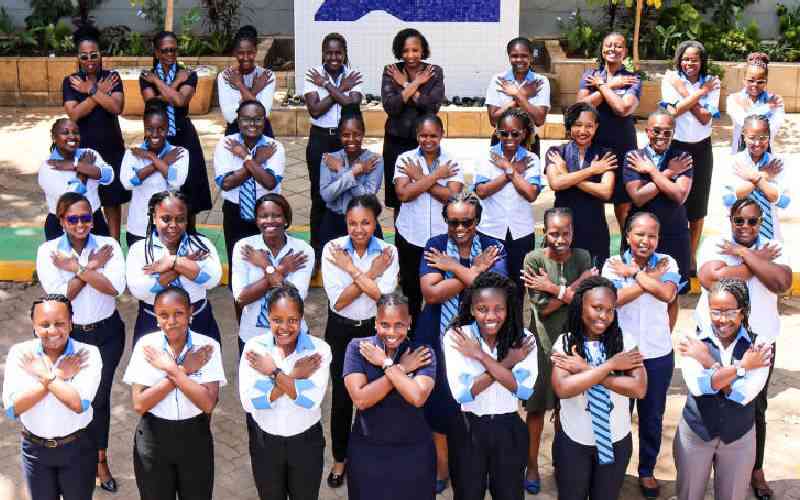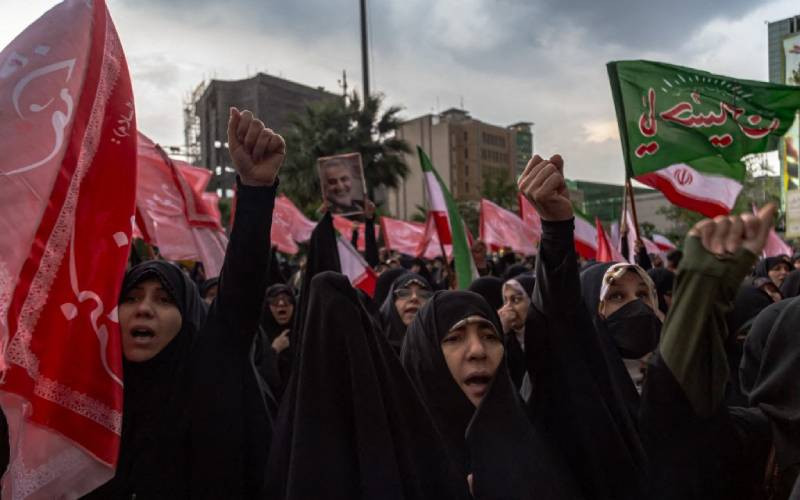By Saida Ali
Today is Day Two of the 16 Days of Activism Against Gender based Violence Campaign. I couldn’t think of a better way to describe our societal acceptance of violence against women so I borrowed Nervous Conditions from Tsitsi Dangarembga.
Violence against women is not just a sign, but also a set of nervous conditions. It is based on a mind-set that gets a thrill from rape and murder; places less value on women; gives permission to violence; does not question it, teaches girls and women to anticipate it and accept it, while at the same time elevating those that perpetuate it.
Bizarre misogny
It would be foolish to imagine that we have not evolved in these conversations on violence against women. But the more I think about spaces and dialogues that have shifted, the more I think of how violence against women has in itself evolved and become bolder in its manifestations. Even with the gains spelt out in our Constitution, we witness the most bizarre forms of misogyny.
This year, the 16 Days of Activism Campaign continues the theme of “From Peace in the Home to Peace in the World: Let’s Challenge Militarism and End Violence Against Women!” Militarism is a creation and normalization of a culture of fear that is supported by the use or threat of violence.
There is an obvious rise in a culture that promotes and celebrates violence and impunity on violence against women. We have seen situations in Kenya recently where violent men in public offices become heroes with their acts christened and thereby sanctioned — such as “Kiderorization” meaning to give a woman a good slap or “Kukideroriwa”. The prefixes that come with it are all signs of a society that desperately uses violence to domesticate women.
From the Kidero incident, to Mike Sonko’s insults and physical violence, to a woman delivering on the floor of a hospital and another gang-raped, all in Busia, Liz in Busia. There are the stories of the policewoman whose arm was broken by an MP, and men boldly pushing for disempowerment of women under the banner of Maendeleo ya Wanaume.
The media too gives space to misogynistic reporting that justifies violence against women.
Women’s bodies are often the loci of culture. The way we dress, where and how we speak, what we eat, who we look at, the spaces we interact, how and with whom we walk, and what time we walk are all used to justify violence.
Punishing the victim
Women’s bodies are not only used to define cultural practices, but have become culture itself. In the case of Liz in Busia, the police not only punished the perpetrators to cut grass they also punished Liz to mop the floor of the police station for being out late at night. Unless we begin to see this as an unacceptable and abnormal, we shall continue to be a society that blames and shames victims while aiding perpetrators to walk scot-free.
In the much publicised case of Liz for instance, the police indicated that Liz did not immediately report that she had been sexually abused. This does not justify non-action even if the matter is reported a year later. The police were also expecting a witness to step forward and indicate that she was indeed defiled by six men and dumped in a pit latrine.
A forced mute
That kind of expectation is ridiculous given that rapes do not happen on restaurant tables or in open air markets. It is a crime that thrives on violations in the private targeting the very core of a woman’s integrity. Rape can turn any powerful woman into a mute. In the absence of supportive reporting measures, a victim is likely to clam up.
Stay informed. Subscribe to our newsletter
Violence against women and female human rights defenders is proof that violence continues to be used a tool to oppress, silence and even impose sanctions as part of controlling women’s bodily autonomy. There are numerous cases of women subjected to harassment, defamation, intimidation and the threat of rape and murder for just standing up to defend the gains on women’s rights.
These are symptoms of a profound crisis in our society. These nervous conditions have a global trend which makes the theme of this year’s 16 Days of Activism still relevant four years after it was set out. The thing about use of aggression or threat of violence is that it elevates one form of hegemonic masculinity and makes it dominant, thus becoming a threat even to men that do not conform to violent behaviour.
Even as we experience this pushback on gains on women’s rights globally we also witness bold action challenging the status quo. We remember the sex boycott in Kenya, the mothers of political prisoners stripping at Freedom corner, and more recently Kenyan women hanging knickers on the fence of the office of the Inspector General to protest rape.
There has also been bold actions by artists in other parts of the world such as the punk group Pussy Riot, who were arrested last year after singing songs challenging the Russian Orthodox Church and Russia President Vladimir Putin in Moscow.
Fifty-three years ago yesterday in the Domican Republic, the Mirabel sisters, part of the Butterflies movement against the dictatorship of Trujillo, were killed and many years later, the United Nations adopted November 25 as the International Day to end violence against women
The 16 Days of Activism is a global Campaign that happens annually from November 25 to December 10 of every year. The day’s activities are linked to the International Human Rights Day on December 10.
 The Standard Group Plc is a
multi-media organization with investments in media platforms spanning newspaper
print operations, television, radio broadcasting, digital and online services. The
Standard Group is recognized as a leading multi-media house in Kenya with a key
influence in matters of national and international interest.
The Standard Group Plc is a
multi-media organization with investments in media platforms spanning newspaper
print operations, television, radio broadcasting, digital and online services. The
Standard Group is recognized as a leading multi-media house in Kenya with a key
influence in matters of national and international interest.
 The Standard Group Plc is a
multi-media organization with investments in media platforms spanning newspaper
print operations, television, radio broadcasting, digital and online services. The
Standard Group is recognized as a leading multi-media house in Kenya with a key
influence in matters of national and international interest.
The Standard Group Plc is a
multi-media organization with investments in media platforms spanning newspaper
print operations, television, radio broadcasting, digital and online services. The
Standard Group is recognized as a leading multi-media house in Kenya with a key
influence in matters of national and international interest.









